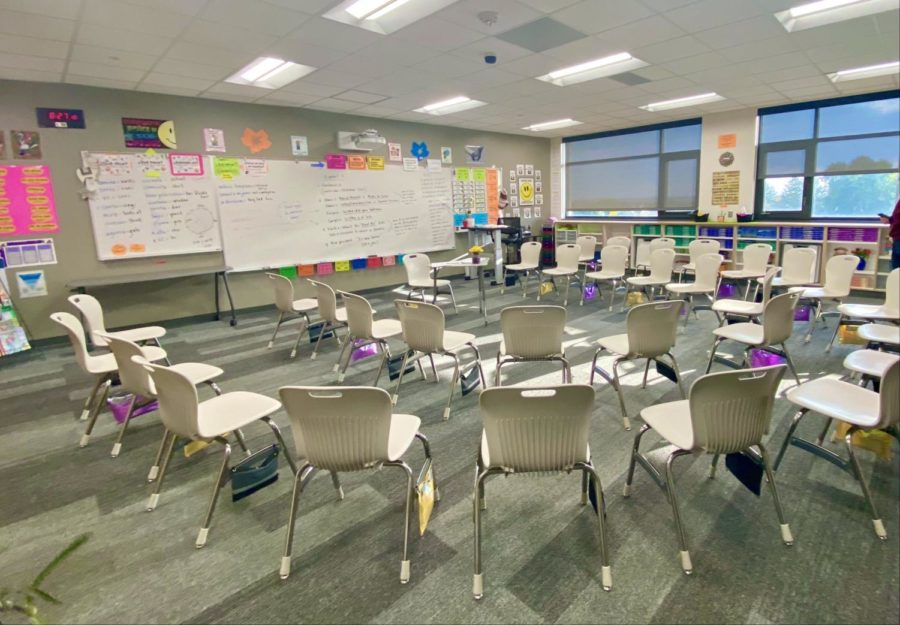Desk-less Classrooms
September 23, 2021
Over the summer, Spanish teacher Stephanie Riessen decided to try out something new for her classroom. She removed all of the desks except for a table that holds her laptop. “I read a lot of blogs over the summer about other teachers across the nation that are doing it and I was very intrigued by it,” said Riessen.
Like Riessen, many teachers are trying out this new learning environment for their students. According to a blog by Yasmin Bendaas on Ednc.org, she got the idea of a desk-less classroom at the State Innovation Conference held at the University of North Carolina Wilmington’s Watson College of Education. Uncw.edu says, “The conference was designed to bring education leaders, policymakers, business leaders and other influential individuals together to showcase successful programs and discuss ways to foster innovation in K-12 schools.” Here, many teachers share innovative ways that they have changed their classrooms. There were some teachers at the conference who suggested that a desk-less classroom benefited their students greatly. They explained how being able to freely move around the room helped their students be more productive.
Another benefit without desks, there is also more room for activities. “This space constantly flexes to meet the needs of students,” said Tracy Evans on Edutopia.org. Students can move their seats or themselves anywhere around the classroom, which is difficult in a classroom full of desks. This also provides teachers the opportunity to base their lesson on the fact that there is plenty of open space.
The open space also offers room for open conversation. With no desks, there is no physical barrier between the students and their teacher which can help them communicate more effectively. “I was really trying to create a more conversational environment in my classroom and I thought that my students could benefit from it,” said Riessen. So far, Riessen feels that has been accomplishing her goal with the new classroom. “I feel like kids are more engaged and more communicative,” said Riessen.
However, a desk-less classroom might be an uncomfortable experience for students who have never been in one before. “I don’t really like them because I want to be able to put my stuff in front of me, write down stuff in front of me, and not have to use my lap all the time,” said Trini Huaracha ’23. “Sitting on the floor is way more comfortable than sitting on a chair with no desk in front of you.” Yet, many students opt out of sitting around the room because they do not want to feel singled out. “No one’s really brave enough to do it. If I see someone else do it, I do it because I’m like ‘Okay, I’m not the only one,’” said Huaracha ’23.
Riessen and students agree the new classroom does help students focus more. According to Huaracha ’23, “You don’t really have that kind of table group or you know, that person next to you that talks to you all the time.” This makes the students more inclined to pay attention to the teacher rather than their peers.
All in all, the goal of a desk-less classroom is to take away the student-teacher barrier and help students stay more engaged. While teachers hope students will feel these benefits, students say they need to be comfortable enough to embrace this new style of education. It is only the beginning of the school year meaning, there is still time for students to learn how to navigate their new environment.





